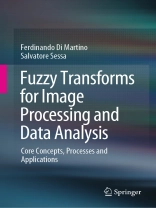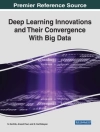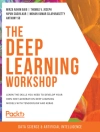This book analyzes techniques that use the direct and inverse fuzzy transform for image processing and data analysis. The book is divided into two parts, the first of which describes methods and techniques that use the bi-dimensional fuzzy transform method in image analysis. In turn, the second describes approaches that use the multidimensional fuzzy transform method in data analysis.
An F-transform in one variable is defined as an operator which transforms a continuous function f on the real interval [a, b] in an n-dimensional vector by using n-assigned fuzzy sets A1, … , An which constitute a fuzzy partition of [a, b]. Then, an inverse F-transform is defined in order to convert the n-dimensional vector output in a continuous function that equals f up to an arbitrary quantity ε. We may limit this concept to the finite case by defining the discrete F-transform of a function f in one variable, even if it is not known a priori. A simple extension of this concept to functions in two variables allows it to be used for the coding/decoding and processing of images. Moreover, an extended version with multidimensional functions can be used to address a host of topics in data analysis, including the analysis of large and very large datasets.
Over the past decade, many researchers have proposed applications of fuzzy transform techniques for various image processing topics, such as image coding/decoding, image reduction, image segmentation, image watermarking and image fusion; and for such data analysis problems as regression analysis, classification, association rule extraction, time series analysis, forecasting, and spatial data analysis.The robustness, ease of use, and low computational complexity of fuzzy transforms make them a powerful fuzzy approximation tool suitable for many computer science applications. This book presents methods and techniques based onthe use of fuzzy transforms in various applications of image processing and data analysis, including image segmentation, image tamper detection, forecasting, and classification, highlighting the benefits they offer compared with traditional methods. Emphasis is placed on applications of fuzzy transforms to innovative problems, such as massive data mining, and image and video security in social networks based on the application of advanced fragile watermarking systems.
This book is aimed at researchers, students, computer scientists and IT developers to acquire the knowledge and skills necessary to apply and implement fuzzy transforms-based techniques in image and data analysis applications.
Table of Content
1. Fuzzy Transform Concepts.- 2. Multi-dimensional High Degree Fuzzy Transform.- 3. Fuzzy Transform for Image and Video Compression.- 4. Fuzzy Transform Technique for Image Auto Focus.- 5. Fuzzy Transform for Image Fusion and Edge Detection.
About the author
Dr. Ferdinando Di Martino is a University Researcher Scientist in Computer Science at the Department of Architecture, University of Naples Federico II, Italy. Dr. Sessa Salvatore is a Full Professor of Computer Science at the same institution.












